Discover 5 hidden attractions, cool sights, and unusual things to do in Barnard Castle (United Kingdom). Don't miss out on these must-see attractions: Teesdale, Bowes Museum, and Egglestone Abbey. Also, be sure to include Barnard Castle in your itinerary.
Below, you can find the list of the most amazing places you should visit in Barnard Castle (England).
Table of Contents
Teesdale
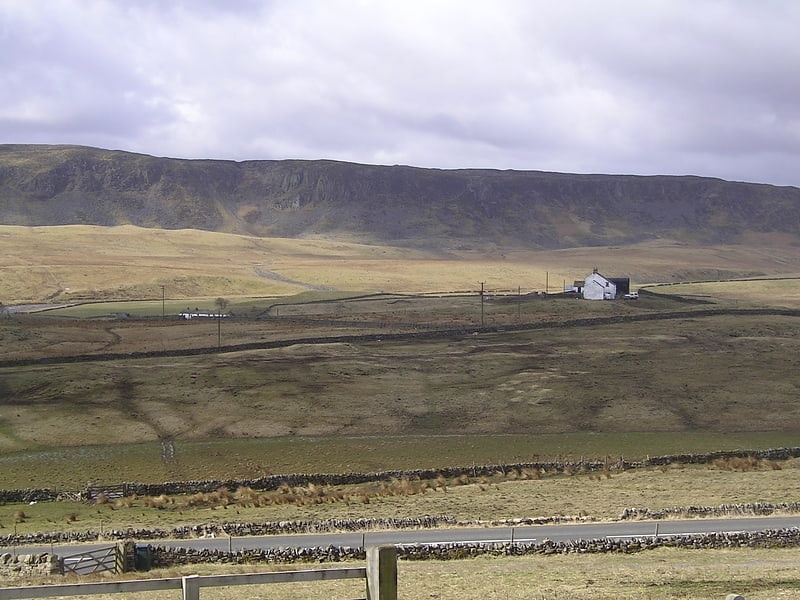
Teesdale is a dale, or valley, in Northern England. The dale is in the River Tees’s drainage basin, most water flows stem from or converge into said river, including the Skerne and Leven.
Upper Teesdale, more commonly just Teesdale, falls between the Durham and Yorkshire Dales. Large parts of Upper Teesdale are in the North Pennines AONB (Area of Outstanding Natural Beauty) - the second largest AONB in England and Wales. The River Tees rises below Cross Fell, the highest hill in the Pennines at 2,930 feet (890 m), and its uppermost valley is remote and high. The local climate was scientifically classified as "Sub-Arctic" and snow has sometimes lain on Cross Fell into June (there is an alpine ski area Yad Moss).
East Teesdale has mixed urban (Tees Valley or Teesside) and rural (Cleveland) parts. Roseberry Topping is a notable hill on the south eastern side, of which this and other adjoining hills form the northern end of the North York Moors.
Newer terms have gained stronger associations with separate parts of the valley due to their use as specific political constituencies and authorities.[1]
Bowes Museum
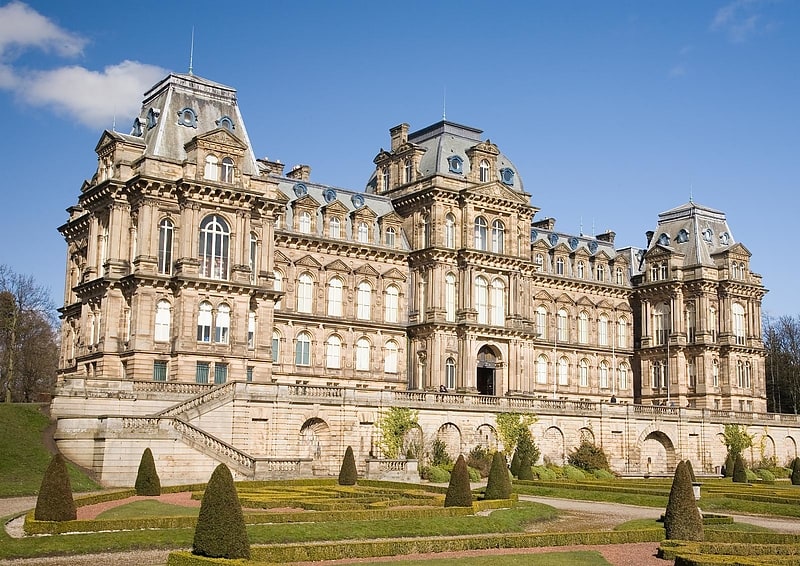
Museum in Barnard Castle, England. The Bowes Museum has a nationally renowned art collection and is situated in the town of Barnard Castle, Teesdale, County Durham, England.
The museum contains paintings by El Greco, Francisco Goya, Canaletto, Jean-Honoré Fragonard and François Boucher, together with a sizable collection of decorative art, ceramics, textiles, tapestries, clocks and costumes, as well as older items from local history. The early works of French glassmaker Émile Gallé were commissioned by Joséphine, wife of the founder John Bowes. A great attraction is the 18th-century Silver Swan automaton, which periodically preens itself, looks round and appears to catch and swallow a fish.[2]
Egglestone Abbey
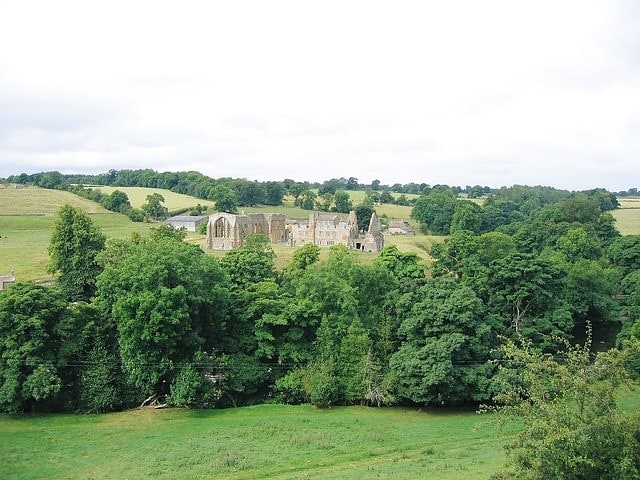
Abbey in England. Egglestone Abbey is a ruined Premonstratensian abbey on the southern bank of the River Tees, in northern England, 1+1⁄2 miles south-east of Barnard Castle. The abbey was historically within the North Riding of Yorkshire, but since 1974 has been in County Durham.
The site buildings are protected as a Scheduled Ancient Monument and maintained by English Heritage; admission is free.[3]
Address: Egglestone Abbey Abbey Lane, DL12 9TN Barnard Castle
Barnard Castle
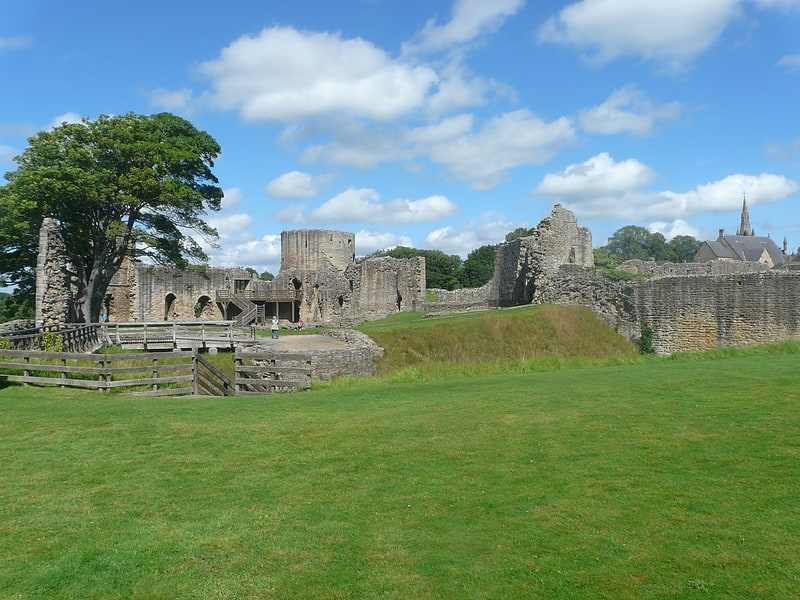
Castle in Barnard Castle, England. Barnard Castle is a ruined medieval castle situated in the town of the same name in County Durham, England.[4]
Address: Hall Street, Barnard Castle
Silver Swan
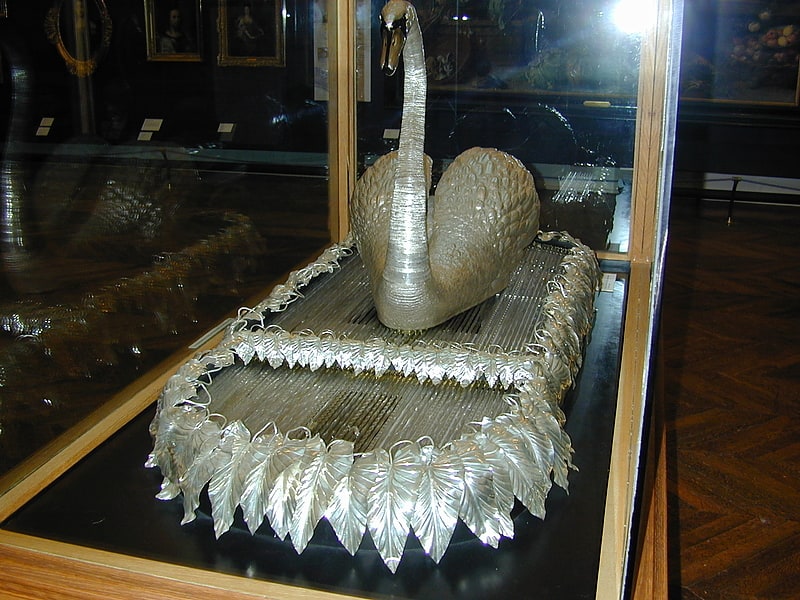
The Silver Swan is an automaton dating from the 18th century and housed in the Bowes Museum, Barnard Castle, Teesdale, County Durham, England. It was acquired by John Bowes, the museum's founder, from a Parisian jeweler in 1872.
The swan, which is life-sized, is a clockwork-driven device that includes a music box. The swan sits in a "stream" made of glass rods and surrounded by silver leaves. Small silver fish can be seen "swimming" in the stream.
When the clockwork is wound, the music box plays and the glass rods rotate giving the illusion of flowing water. The swan turns its head from side to side and also preens itself. After a few moments the swan notices the swimming fish and bends down to catch and eat one. The swan's head then returns to the upright position and the performance, which lasts about 32 seconds, is over. To help preserve the mechanism, the swan was only operated once each day, at 2pm. The museum was closed during 2020 and 2021 so the daily display did not take place; when the exhibit was being prepared for reopening in May 2021 the clockwork mechanism was found to have seized up and it was withdrawn from display for further conservation.
The mechanism was designed and built by the Low Countries inventor John Joseph Merlin (1735–1803) in conjunction with the London inventor James Cox (1723–1800) in 1773.
The swan was described in a 1773 Act of Parliament as being 3 feet (0.91 m) in diameter and 18 feet (5.49 m) high. This would seem to indicate that at one time there was more to the swan than remains today as it is no longer that high. It is said that there was originally a waterfall behind the swan, which was stolen while it was on tour – this could possibly explain the height which is now 'missing'.
It is known that the swan was sold several times and was shown at the Exposition Universelle held in Paris in 1867. The American novelist Mark Twain observed the swan and recorded his observation in a chapter of the Innocents Abroad, writing that the swan "had a living grace about his movement and a living intelligence in his eyes."
In 2017 starting in February the swan spent 6 weeks at the Science Museum as part of an exhibition on robots. In October 2021, the Bowes Museum hosted a 'Silver Swan Study Week', led by clockmaker-conservator Matthew Read. During the week, visitors were able to watch a group of specialist conservators and curators dismantle the swan as they explored the mechanical condition of the object, ahead of creating a conservation plan for its preservation.
The Bowes Museum believes that the Swan is their best-known artefact, and it is the basis of the museum's logo.[5]